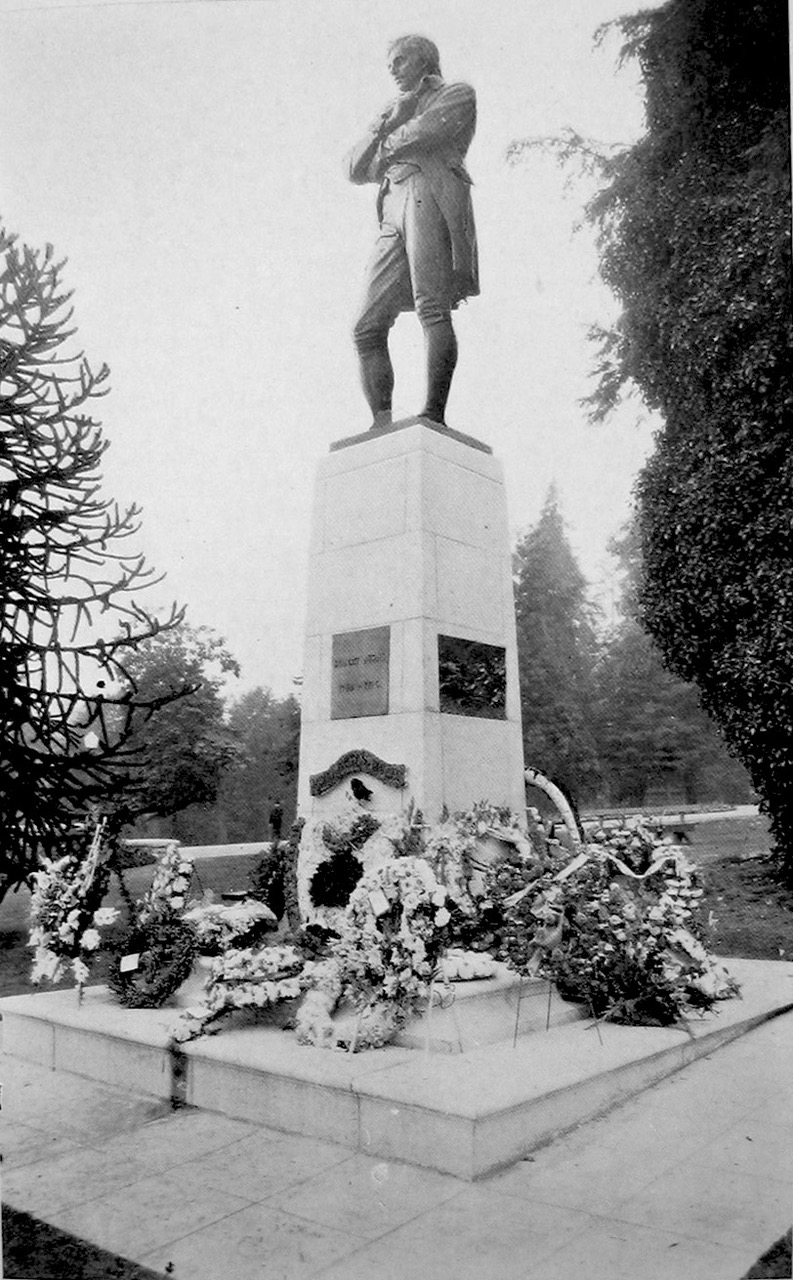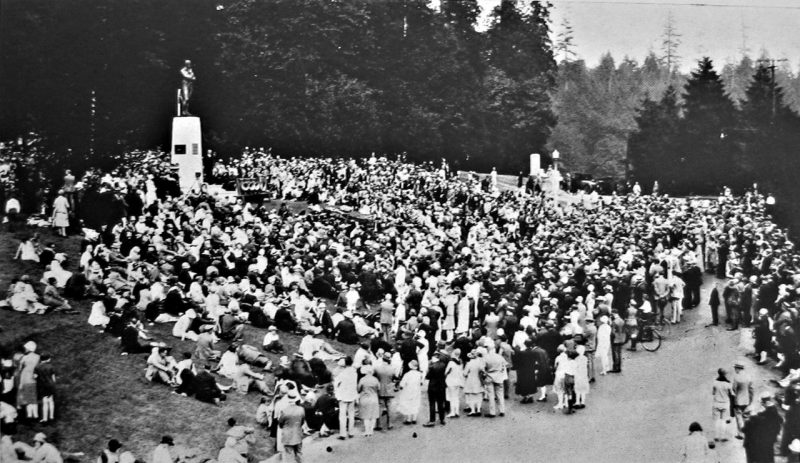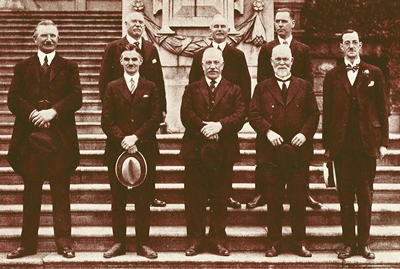#206 Robbie Burns remembered
First published No. 22, 2017.
Ask someone to name B.C.’s most popular poet and you might hear names such as Earle Birney, bill bissett, Patrick Lane, Susan Musgrave, Dorothy Livesay…
None match the fervour of adoration this province felt for Robbie Burns–as Fred Braches recalls upon rediscovering a little-known book about the Burns statue in Vancouver.
LOCATION: Statue near Georgia Street entrance to Stanley Park, opposite the Vancouver Rowing Club
ROBBIE BURNS IN VANCOUVER
by Fred Braches
“Vancouver’s Tribute to Robert Burns”
Looking for a subject to present at a Robert Burns dinner I came across a delightful little book of almost 100 pages published by the Vancouver Burns Fellowship in 1928 with the title Vancouver’s Tribute to Burns. The book, of which a copy survives in the Vancouver Public Library, is illustrated with photographs of dignitaries of the day and includes the original programs of what happened on Saturday, August 25, 1928, when “… there was unveiled, upon a commanding eminence in the evergreen shades of Stanley Park, Vancouver’s first attribute to the memory of Robert Burns.” The anonymous authors thought that the day would “… go down as a red-letter day in the annals of all loyal Scots throughout British Columbia.”
 When the Vancouver Burns Fellowship was created in 1924, one of its main objectives was to put a statue of Robert Burns in Stanley Park. A year later, when membership reached 175, the Fellowship started fundraising, arguing that the statue would soon become a reality if every Scotsman in BC contributed a single dollar. Of course, not every Scot had that money to spare or could be convinced to separate from his hard-earned dollars, but amazingly within three years enough money was raised to pay for the statue.
When the Vancouver Burns Fellowship was created in 1924, one of its main objectives was to put a statue of Robert Burns in Stanley Park. A year later, when membership reached 175, the Fellowship started fundraising, arguing that the statue would soon become a reality if every Scotsman in BC contributed a single dollar. Of course, not every Scot had that money to spare or could be convinced to separate from his hard-earned dollars, but amazingly within three years enough money was raised to pay for the statue.
Subscriptions started with a generous donation of $500 by Walter C. Nichol, then Lieutenant-Governor of British Columbia. The Honourable Walter Nichol had started his career as a newspaper reporter in Ontario and helped launch the magazine Saturday Night before moving to British Columbia, where he became the editor and later the owner of the Province. Not many donations came even close to the amount Walter Nichol contributed, but the money kept coming and within three years enough money was raised to pay for the statue.
With the capital assured, a decision had to be made about the design of the monument. Half a dozen Canadian and British artists presented proposals for the statue. Although one or two of those were deemed “very fine in character,” in the end the gentlemen of the Vancouver Burns Fellowship charged with the selection preferred a replica of the famous statue of Burns by George A. Lawson unveiled in Ayr in 1891. That statue was thought to be “…one of the finest of the poet in existence. A manly figure beautifully proportioned with a magnificent pose. The expression is the work of a genius—every line is true to nature—a marvel in minute details.”
Other places outside Great Britain were apparently equally impressed by Lawson’s work. Before Vancouver’s acquisition in 1928, copies of the statue were already in place in Melbourne, Australia (1903), Halifax (1919), and Detroit (1921), and after Vancouver, Montreal (1930) and Winnipeg (1936) would also unveil a copy of Lawson’s Burns statue.
The pedestal of native granite was made in Vancouver and its “simple lines” were thought “in keeping with the trend of modern thought.” There was, the booklet assures us, “nothing mean” about it and this was definitely not looking “…like a tombstone.”
After completion in Surrey, England, Stanley Park’s Burns statue travelled via the Panama Canal to Vancouver and was put into storage pending the completion of the pedestal. To everyone’s satisfaction the statue was exempted of duty—a donation from the government valued at some $1,000, bringing the total of donations to $8,000. By the time the statute was unveiled there were no debts to pay.

During storage, installation and preparations for the unveiling ceremony the statue was kept hidden. Who would do the unveiling of the statue? The obvious choice for the Fellowship was the now former Lieutenant Governor Walter C. Nichol, who had contributed so early and generously to the acquisition, but unfortunately Mr. Nichol was seriously ill and could not do the honours. He died later that same year.
The Vancouver Burns Fellowship was at a loss where to find a suitable substitute for Mr. Nichol when one of its members read a notice that well-known British politician Ramsay MacDonald, would likely be in Canada at the right time. When asked, MacDonald agreed with pleasure to come to Vancouver and do the unveiling. The organizing committee was delighted. “If we searched our great Empire we could [not have found] another man better qualified or better suited to that duty,” was their opinion.
Ramsay MacDonald had been the first British Labour Prime Minister. He took office in 1924, but in less than a year his government was overwhelmed. Yet, he had shown that Labour could govern effectively. MacDonald belonged to the moderate wing of the party and was very popular with voters. He would return as Prime Minister in 1929.
The unveiling ceremony of the Burns statue in Stanley Park was a great success. The press was well represented, and motion pictures of the event—still silent of course—were later shown at the Capitol Theater, The Pantages, and the Orpheum and throughout Canada. An estimated 12,000 people came to witness the unveiling and to see and hear MacDonald speak. The organizers considered that the event “was still more memorable [because] the figure of the greatest Scotsman of all times was unveiled by the greatest Scotsman of our times.” All the speeches reflected the respect and high regard the speakers felt for the Scottish bard, but judging by the words of the local dignitaries, it seemed that the other hero of the day, the former Prime Minister, was held in equal esteem. At no other time in Vancouver had the memory of Robert Burns such a heavy competition.
The Rt. Hon. Ramsay MacDonald was an excellent speaker and delighted everyone with his oration on the life and genius of Burns. Loudspeakers amplified MacDonald’s words and the words of other speakers, including the just elected Premier, the Hon. Simon Fraser Tolmie (Conservative), and former Premier, the Hon. J.D. MacLean (Liberal). Alderman Almond, acting mayor, spoke for the City of Vancouver. A court stenographer took a verbatim report, and all that was said by everyone can therefore be read in that commemorative book Vancouver’s Tribute to Burns.
The absence of the Mayor L. D. Taylor, a self-styled champion of the workingman, is a surprise. He was also missing from the dinner that evening commemorating the unveiling of the statue. No reason was given. What could have kept him back was a freak accident that kept him off his feet for a few weeks. He happened to be on a flight, some say the first, from Victoria to Vancouver, and, landing at Minoru Park in Richmond, the airplane attracted the attention of the racetrack crowd. Mayor Taylor jumped out of the plane and began to stride towards the people when he was struck by one of the plane’s propellers, still whirling, and he suffered a skull fracture. Someone suggested later “… if he’d have one ounce more brain he would have been a dead man.”
The dinner that evening, presented by the Vancouver Burns Fellowship, was held in the Aztec Room of Hotel Georgia. Radio CKWX was there to broadcast the speeches, and no doubt a court stenographer again recorded what was spoken, as the text of all the speeches of that evening also appear in the book.
Bound in the book is a copy of the original program of the evening with the menu:
Celery/Olives
Potage “Lord o’ the Isles”
Fillet Sole “Glencoe”
Haggis wi’ a’ the Honours
Roast Leg of Lamb / Mint Sauce
Garden Peas / Mashed Potatoes
Strawberry Melba
Oat Cakes / Scones
Rolls / Pudding
Demi Tasse
In the program is also a “Toast List and Musical Programme.” After the Selkirk Grace came the Address to the Haggis, and a toast to the King. The following toast to the Immortal Memory by Ramsay MacDonald was the main item on the program. Thereafter toasts were presented to Canada, British Columbia, the Motherland, the Vancouver Burns Fellowship, Kindred Societies, Our Guests, and the Lassies.
 There was music galore. The guests were escorted to their places with the skirl of the bagpipe, and “God Save the King” was sung after the toast to the King. Songs and other musical presentations followed all the toasts and responses. The evening concluded with the traditional singing of “Auld Long Syne.”
There was music galore. The guests were escorted to their places with the skirl of the bagpipe, and “God Save the King” was sung after the toast to the King. Songs and other musical presentations followed all the toasts and responses. The evening concluded with the traditional singing of “Auld Long Syne.”
The address by the keynote speaker of the evening, Ramsay MacDonald showed again that he was an exceptional orator and that he was very knowledgeable about Burns and his work and that Burns meant much to him personally.
It should be noted that none of the other speakers of that memorable evening was suffering from a lack of words either. They divided their praise between Robert Burns and Ramsay MacDonald and congratulated each other and themselves on their accomplishments.
Noteworthy were also the contributions of two of the daughters of Ramsay MacDonald. Miss Ishbel MacDonald responded to the toast to the Motherland, reminding all: “You must not only talk about the men that are coming out here, but it is equally important the kind of women that come out to settle the country. [The men] will go a very little way facing the problems as well as the burden of a whining wife.”
Miss Joan MacDonald responded to the toast to the Lassies. The gentleman who presented the toast said that he “… could foresee the possibility that within a few years some buxom and aggressive member of the fair sex pokes fun at us in a toast to The Laddies.” The response from Miss Joan MacDonald was brief: “If Mr. McInne’s prophesies come true perhaps next year I will be proposing a toast to The Laddies,” she said.
The illustrious dinner with its dignitaries, speeches, and music marked the end an exceptional and impressive day in Vancouver. The day would have been forgotten were it not for that little commemorative book of 1928 that brings all the details of the celebration to life.

*
LOCATION: Adjoining the putting green in Beacon Hill Park, Victoria
N 48° 24.764 W 123° 21.882
ROBBIE BURNS IN VICTORIA
Perhaps the oldest literary landmark in British Columbia is the uncredited bronze and stone statue unveiled in Beacon Hill Park in November of 1900 in honour of Robbie Burns. Scotsmen of Victoria had initiated a fundraising campaign for a $2,000 memorial statue and fountain in 1897. The result depicts the author of Auld Lang Syne reciting his poem ‘Highland Mary’ to a Scottish lass. On each side of the statue there is a line from the poem. Among Burn’s other best-known poems and songs are Scots Wha Hae, often considered the unofficial national anthem of Scotland as well as A Man’s A Man for A’ That, To a Louse and To a Mouse. Burns was born on January 25, 1759 and died on July 21, 1796.
There are at least nine statues dedicated to the memory of Burns in Canada. One of these is a nine-foot bronze figure of Burns at the entrance to Stanley Park in Vancouver, erected in 1928. Reputedly the oldest statue in Vancouver, it was commissioned after the formation of the Vancouver Burns Fellowship society in 1924 to

encourage the singing of his songs and study of his life. The original executive consisted of (front row) Rev. Alex. Thomson, James Taylor (Hon. Secretary of Statue Fund), P. McA. Carrick (President), Alex. McRae (Vice-President), and A. Fraser Reid (Hon. Secretary of Fellowship) and (back row) David Murray, John Macdonald and John MacInnes.
After attempts to commission a stature failed to produce a likeness that was deemed suitable, the Burns society opted to purchase a copy of a statue designed by George Lawson in Ayr, Scotland for $5,000. After it was delivered via the Panama Canal, another $2,000 was need for a granite pedestal made in Vancouver by the firm of Patterson and Chandler. It was officially unveiled by Ex-Prime Minister of Britain Ramsay MacDonald who was coincidentally in Vancouver for a vacation. Sue Bigelow has provided an excellent summary of the occasion on AuthentiCITY.